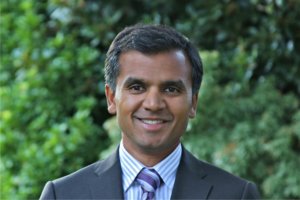Dr. Singhal – Bourse de stagiaire de recherche 2012
Dr. Ash Singhal, University of British Columbia and BC Children’s Hospital, Vancouver, BC
Project Title: « Targeting the Elimination of Brain Tumour Initiating Cells by disrupting the P13K pathways »
What does the title mean?
This research will study new treatment approaches with the goal of improving patient cure rates by blocking brain tumour initiating cell mechanisms believed to be responsible for tumour growth.
Project Summary:
 Brain tumours are the most common type of solid tumour in children. The principal issue affecting survival is that brain tumours often recur, and in many instances children with malignant brain tumours have less than a 50% chance of surviving one year after their initial diagnosis.
Brain tumours are the most common type of solid tumour in children. The principal issue affecting survival is that brain tumours often recur, and in many instances children with malignant brain tumours have less than a 50% chance of surviving one year after their initial diagnosis.
There is research suggesting that one reason why brain tumours are so difficult to treat is that a unique stem cell type, the brain tumour initiating cell (BTIC), makes the tumours drug and/or radiation-resistant. One challenge with past research is that non-human (animal model) brain tumours are not necessarily representative of human brain tumours. Our plan is to study, using human pediatric brain tumour preparations, new treatment approaches with the goal of improving patient cure rates.
We plan to block a specific mechanism of growth of BTICs that we believe is responsible for the progression of those tumours. Once this mechanism is shut down, the cells will be deprived of necessary growth signals and they will die. We then plan to combine these inhibitors with classic agents used to treat brain tumours so that we are able to eliminate the cancer cells and improve cure rates.
Research Outcome:
Study progression and enrolment have been stable since the beginning of the study. Currently, there are 22 subjects enrolled in the study. Moreover, one of these patients has required 2 subsequent surgeries for tumour relapse. Tumour samples from both of this patient’s relapse surgeries were successfully collected into the study. Of all the eligible patients approached to participate in the study, only one family has declined enrolment. Thus, we have an excellent patient capture rate. Unfortunately, however, 5 subjects have been lost to study due to their tissue samples being unable to grow in the laboratory. At the beginning of the study, we expected an average cultivation rate of tumour samples in the lab to be around 85%. Factoring in the 5 uncultivated tumour samples, the study cultivation rate, this far, is 79%, which is in keeping with the expected cultivation rate. As demonstrated in Figure 2, recruitment rates can fluctuate over time. This year (2013) has had a particularly low number of high-grade brain tumours present to BCCH.
The support from the Brain Tumour Foundation has been an indispensable resource in making this project successful over the last year. As mentioned earlier in this report, patient identification and enrolment is the most crucial step to the success of this project. The support provided by Brain Tumour Foundation of Canada has allowed the Study Coordinator to successfully screen and approach 100% of families of children diagnosed with high-grade brain tumours. In our grant application, we expected to enrol between 8-10 patients. As expected, 8 patients presented to BCCH with high-grade tumours, with only one family declining participation in the study. Read more (PDF).